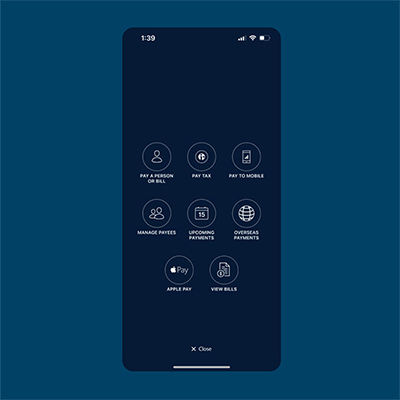Supporting Brands' Accessibility
What accessibility means when it comes to digital?
At Dave Clark, accessibility isn’t an add-on. It’s baked into the way we think, design, and build. Because great digital experiences should work great for everyone—regardless of ability, device, or context.
When we talk about accessibility, we’re talking about removing barriers. For people with visual, auditory, cognitive, or physical impairments, it means being able to access and use content, services, and products with ease. For businesses, it means being open to more users and delivering a better experience for all.
We design with inclusion in mind from day one—making sure our work isn’t just compliant, but clear, logical, and easy to use for real people in the real world.
Why accessibility is so important?
Yes, it’s a human right. But it’s also just good design in practice.
Accessible websites aren’t just ideal for users with screen readers or specific impairments— they’re better for everyone. Cleaner layouts. Better contrast. Simpler navigation. A better experience across the board.
And let’s not forget search engines and devices also favour accessible content. So whether you're talking UX, SEO, or customer retention—accessibility has an important role to play in the effectiveness and usability of your digital imprint.
What does better accessibility look like in action?
Accessibility isn’t simply a box to tick. It shows up in the details:
- Text that’s easy to read – with proper contrast, flexible sizing, and clear hierarchy
- Alt text that describes visuals, so screen readers don’t miss key content
- Navigation that works with a mouse, keyboard, or screen reader—whichever works best for the user
- Forms that are simple, structured, and easy to complete
With Dave Clark New Zealand team, we consider and build all these features in from the ground up—not retroactively, but as part of the core digital experience.
Designing for screen readers and assistive tools
Screen reader compatibility is a cornerstone of accessible design. These tools convert text into speech, enabling users who are blind or have low vision to access and navigate digital content.
That’s why every element of your site—content, navigation, forms—should work just as well with a screen reader or keyboard as it does with a mouse. Because accessibility isn’t a bonus feature, it’s just good design.

We help ANZ make sure goMoney is accessible to all users
Web accessibility guidelines and standards
WCAG 2.0 outlines three levels of compliance: A (the minimum), AA (the most commonly adopted), and AAA (the gold standard).
Most countries use WCAG as the foundation for their own accessibility requirements—making it the go-to framework for building inclusive digital experiences.
How we design accessible experiences with our clients
The Dave Clark New Zealand team are committed to helping our clients create accessible digital content and services. We work with our clients to ensure that their websites and digital content are compliant with accessibility guidelines and standards.
As we tackle your project together, we’ll:
- Review your site for accessibility gaps
- Collaborate on practical, design-led solutions
- Ensure compatibility with assistive tech like screen readers
- Support compliance with WCAG and local standards
- Provide clear documentation, guidance, and training to upskill your team
Whether we’re building from scratch or optimising what already exists, you can trust we'll keep it clear, collaborative, and user-first.
Getting started with accessibility in your organisation
When designing or updating a website, it’s important to consider the needs of everyone who might use it—including those with visual, auditory, physical, or cognitive impairments. That means ensuring your content works with assistive technologies like screen readers and is navigable using a keyboard, mouse, or alternative input.
But remember, accessibility doesn’t have to happen all at once. Start where you are and improve over time.
Here are some simple ways to start building accessibility into your digital practice:
- Start with awareness. Make sure your team understands why accessibility matters. Resources like the Web Accessibility Initiative (WAI) from W3C are a great place to start.
- Embed it into your mindset. From content creation to development, think about how each decision affects users with different needs.
- Use the right tools. From automated checkers to alt text generators, there are plenty of tools that can help you integrate accessibility into your everyday workflow.
- Test with real users. Inclusive design means inclusive feedback. Involve users with different access needs to see how your site actually performs.
- Treat it as ongoing. Accessibility isn’t a box you tick once—it’s something you maintain and improve over time, just like the rest of your digital experience.
Of course, progress is better than perfection. Take small, meaningful steps and keep going. We’re always here if you need a hand.


